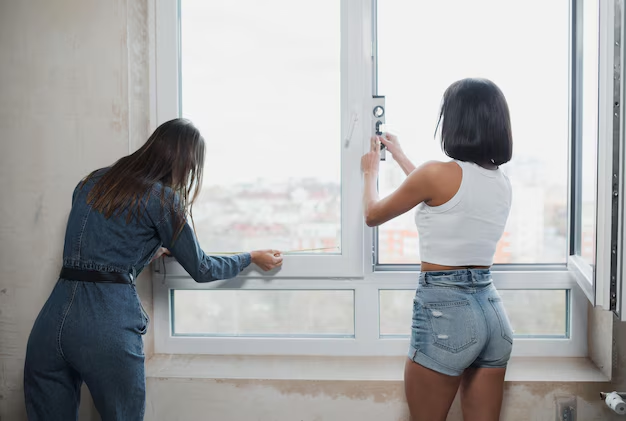How Much Does It Really Cost to Install New Windows in Your Home?
When it comes to home improvement projects, installing new windows often tops the list for many homeowners. Not only do new windows enhance the aesthetic appeal of a house, but they can also significantly improve energy efficiency. However, alerting homeowners are often curious, "What is the average cost of window installation?" Delving into this topic is crucial for planning and budgeting purposes. In this comprehensive guide, we will break down the costs associated with window installation and explore various related aspects to help you make an informed decision.
Why Consider Window Installation?
Before discussing costs, let's explore why window installation is an essential aspect of home improvement:
- Aesthetic Appeal: New windows can drastically change the look of your home, giving it a fresh, updated appearance.
- Energy Efficiency: High-quality windows improve insulation, reducing heating and cooling costs.
- Increased Property Value: Upgraded windows can enhance property value by improving curb appeal and energy efficiency.
- Noise Reduction: Modern windows provide better soundproofing, offering a more serene indoor environment.
- Enhanced Security: Newer models often feature advanced security features that increase safety.
Now that we understand the benefits, let's delve deeper into the financial considerations.
Understanding the Components of Window Installation Costs
1. Types of Windows
a) Single Hung vs. Double Hung Windows
- Single Hung Windows: Cost-effective but offer limited ventilation.
- Double Hung Windows: Slightly more expensive but provide better airflow.
b) Casement Windows
- Casement Windows: Known for excellent energy efficiency, cost comparable to double hung but can be more depending on the material.
c) Sliding Windows
- Sliding Windows: Typically cost-effective, offering easy operation and durability.
2. Window Materials
The material from which a window is made significantly impacts both performance and cost.
Vinyl Windows: Affordable, low-maintenance, and energy-efficient.
Wood Windows: Premium look, great insulation but require maintenance and are pricier.
Aluminum Windows: Durable, low-cost but less efficient in insulation.
Fiberglass Windows: High durability and efficiency at a higher price point.
3. Custom vs. Standard Windows
- Standard Windows: Mass-produced, generally more affordable.
- Custom Windows: Tailored to irregular spaces or design preferences, with associated higher costs.
4. Glazing Options
- Single Glazing: Least expensive, least efficient.
- Double Glazing: A mid-range option offering good insulation.
- Triple Glazing: Most costly but provides superior energy efficiency and soundproofing.
Average Cost Breakdown
Installation Costs
Professional installation costs range depending on several factors:
- Labor: Usually $100 to $300 per window.
- Complexity: Difficult installations, such as those requiring custom trims or structural alterations, escalate costs.
Regional Variability
Costs vary significantly based on location due to labor rates and material procurement.
- Urban vs. Rural: Urban areas generally entail higher labor costs.
Additional Costs
- Removing and Disposing Old Windows: Typically $50 per window.
- Permitting Fees: Vary by municipality but are sometimes required for significant renovations.
Table: Overview of Costs by Window Type
| Window Type | Average Material Cost (each) | Average Installation Cost (each) |
|---|---|---|
| Single Hung | $100 - $300 | $100 - $150 |
| Double Hung | $150 - $400 | $150 - $200 |
| Casement | $200 - $500 | $150 - $250 |
| Sliding | $150 - $600 | $100 - $200 |
| Bay/Bow | $800 - $1,500 | $300 - $500 |
Tips for Cost-Effective Window Installation 🤑
- Get Multiple Quotes: Always compare estimates from different contractors to ensure competitive pricing.
- Consider Bulk Purchase: Ordering and installing windows in bulk can sometimes attract discounts.
- Time Your Purchase: Off-season purchases can often secure lower prices.
- Look for Rebates: Check for state or federal energy-efficiency rebates that can offset costs.
- DIY Options: For the handy homeowner, tackling simple installations can save labor costs (though professional help is recommended for complex jobs).
Choosing the Right Contractor
When selecting a contractor, research is key:
- Experience and References: Choose contractors with a solid track record and positive reviews.
- License and Insurance: Verify that your contractor is properly licensed and carries insurance.
- Warranty: Ensure the installation has a warranty covering workmanship quality and material defects.
Questions to Ask Potential Contractors:
- What is included in the estimate? Be clear about what services and materials are covered.
- How long will the project take? Get a timeline to ensure it aligns with your schedule.
- What preparation is needed? Understand if there are any pre-installation requirements.
Maintenance Considerations
Post-installation, maintaining your windows extends their life and performance.
- Regular Cleaning: Prevents dirt buildup and maintains insulation efficiency.
- Inspect Seals and Caulking: Check regularly to prevent drafts and leaks.
- Lubricate Moving Parts: Ensures ease of operation and longevity.
Making the Investment Count
Installing new windows is a significant investment, one that can yield substantial returns in comfort, aesthetics, and value. While upfront costs can seem daunting, the benefits often justify the expense. By understanding the components of window installation and planning meticulously, you can make decisions that fit both your needs and budget.
In your journey to new window installation, remember that knowledge is empowerment. Equip yourself with the right information, and you'll not only enhance your living space but also make a smart, strategic investment in your home’s future. 🌟
